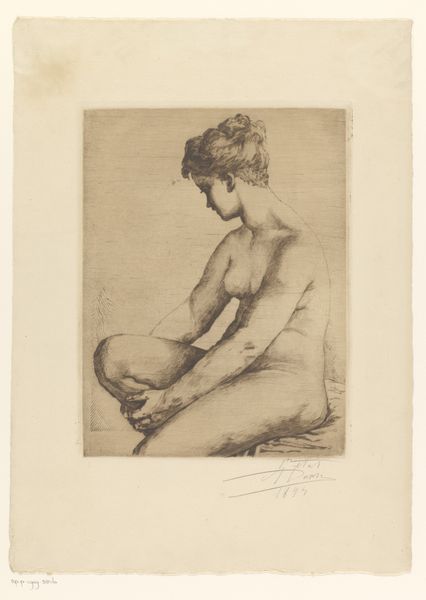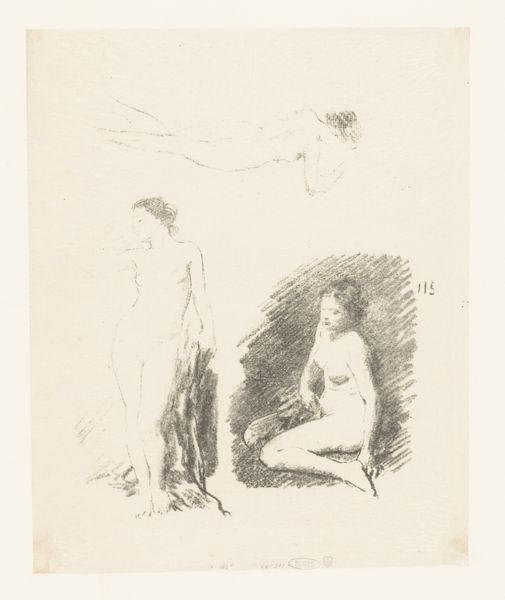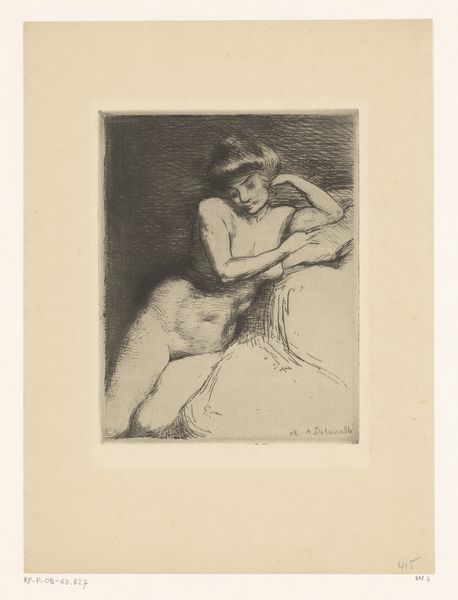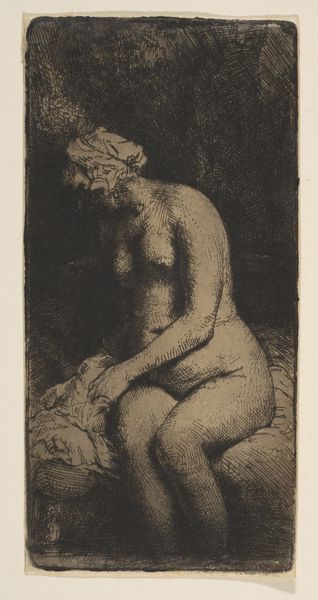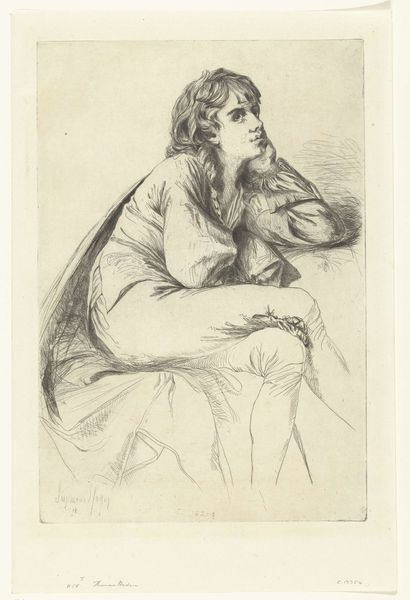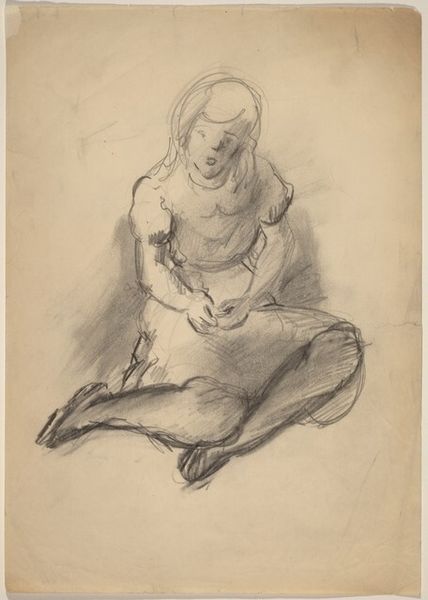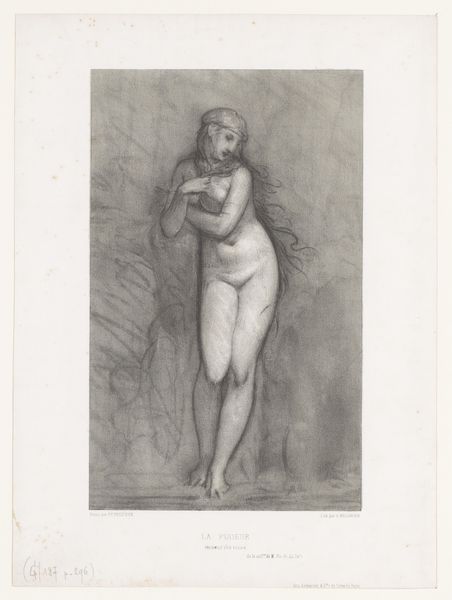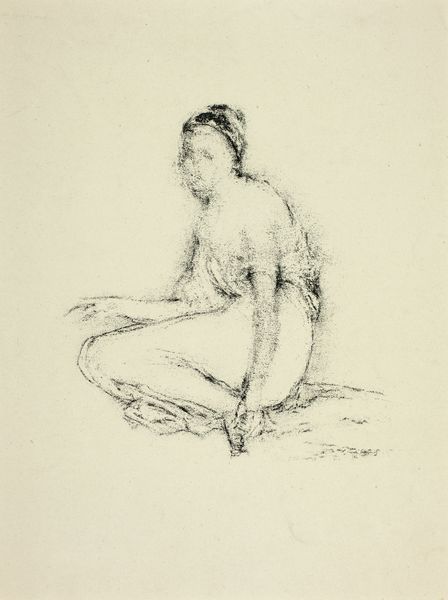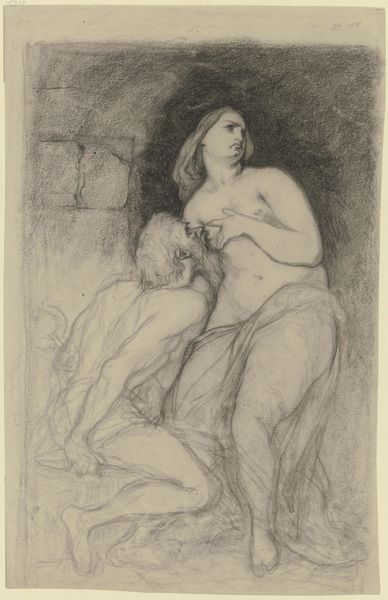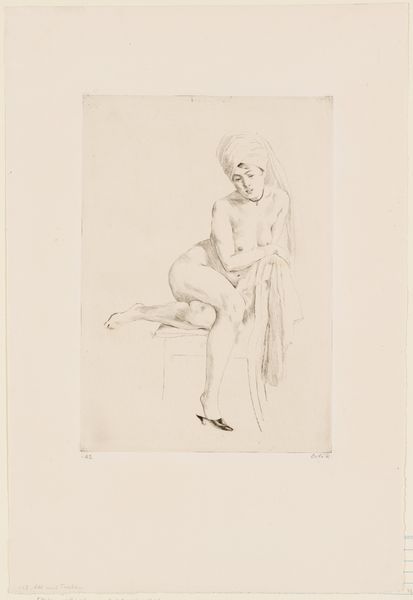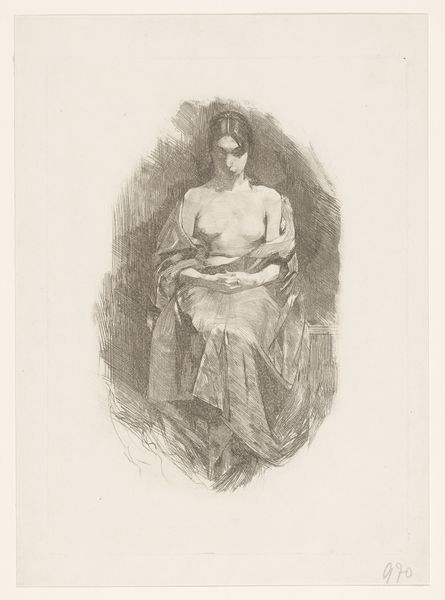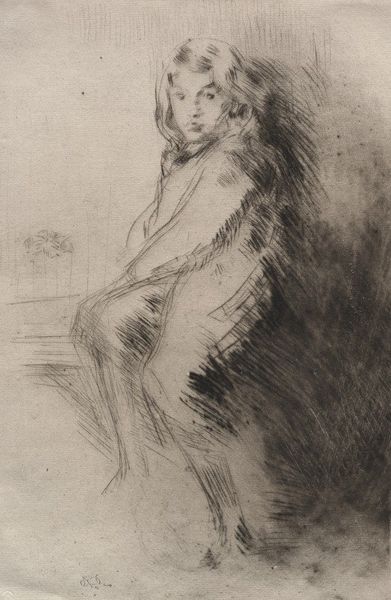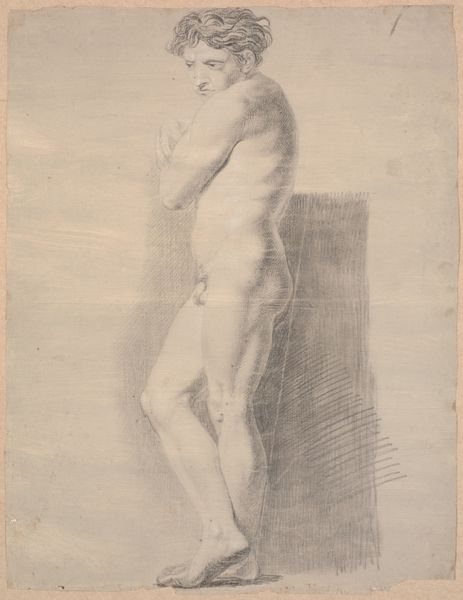
Dimensions: 192 × 135 mm (image); 250 × 225 mm (plate); 372 × 264 mm (sheet)
Copyright: Public Domain
Pierre-Auguste Renoir made this Study of a Seated Nude Woman using lithography, a printmaking process, sometime between 1890 and 1910. Lithography involves drawing with a greasy crayon onto a flat slab of limestone or a metal plate. The stone is then treated so that ink adheres only to the drawn areas, allowing the image to be printed. Renoir’s mastery of this process allowed him to achieve a range of tonal variations and a soft, painterly effect, quite different from the marks of the crayon. It’s interesting to consider the social context of printmaking. Unlike painting, which produces a unique object, lithography allows for the creation of multiple impressions. This makes art more accessible to a wider audience, connecting to the rise of mass media and visual culture. The lithographic process, which involves skilled labor and technical expertise, also democratizes art production and consumption, challenging traditional notions of artistic genius and the art market. Paying attention to materials, making, and their wider context can enrich our understanding of this beautiful artwork, challenging traditional distinctions between fine art and craft.
Comments
No comments
Be the first to comment and join the conversation on the ultimate creative platform.
